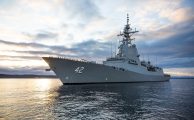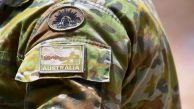
Navy Vessels are Under-Gunned.
With a maritime jurisdiction exceeding 8 million square kilometres. The nation’s historical relationship with the sea has fluctuated from angst to apathy due to the “tyranny of distance,” exacerbated by recent global events such as Russia’s invasion of Ukraine and conflicts in the Middle East and the Red Sea.
The government’s Defence Strategic Review (DSR) underscores the renewed importance of maritime security, prompting a significant restructuring of the Royal Australian Navy. This review questions previous procurement decisions and emphasizes a three-pronged approach to modernize maritime combat capabilities, aligning with the nation’s future nuclear-powered submarine fleet.
The DSR advocates for an enhanced surface combatant fleet to complement the submarine force, emphasizing long-range strike, air defence, and anti-submarine warfare. The government’s independent analysis into the Navy’s Surface Combatant Fleet is awaited, sparking public debate on the suitability of vessels like the Arafura and Hunter Class.
Concerns have been raised about the Arafura Class’s lack of main armament, while the Cape Class patrol boats also face criticism for being under gunned. The article questions the logic behind the criticism and highlights the need for a realistic assessment of Australia’s maritime capabilities. Retired Rear Admiral Rowan Moffitt suggests that being honest about Australia’s naval combat capabilities, especially in brown-water environments, is crucial to avoid costly delusions.
The article concludes by emphasizing the need for a transparent discussion between policymakers, elected officials, and the public. It calls for increased long-term defence spending and a shift from a “balanced force” to a “focused force,” acknowledging the challenges of evolving geopolitical and strategic landscapes. Ultimately, the article urges collaboration and transparency to gain public trust and support for the nation’s future direction.




